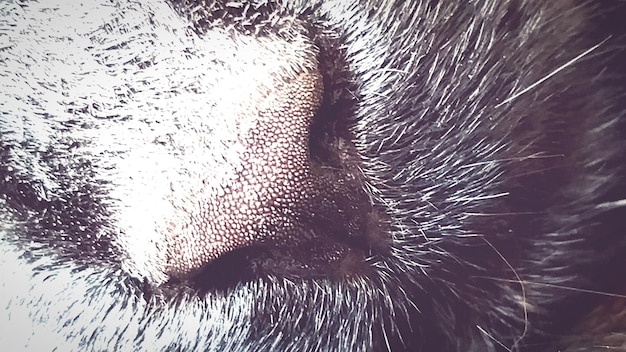Best Flea and Tick Treatments for Dogs: 2025 Product Review

Anúncios
Unveiling the Best Flea and Tick Treatments for Dogs: A Review of 2025’s Top Products identifies effective solutions for pet owners seeking to protect their canine companions from these common parasites, focusing on safety, efficacy, and ease of use.
Protecting your furry friend from fleas and ticks is a year-round commitment. With 2025 on the horizon, it’s time to explore the most advanced and effective solutions available. This article, Unveiling the Best Flea and Tick Treatments for Dogs: A Review of 2025’s Top Products, highlights the top contenders to keep your canine companion healthy and happy.
Anúncios
Understanding the Threat: Fleas and Ticks
Fleas and ticks are more than just a nuisance; they pose significant health risks to dogs. Understanding these risks is crucial for every dog owner, enabling informed choices about prevention.
The Dangers of Fleas
Fleas can cause more than just itching. A severe infestation can lead to anemia, especially in puppies. Additionally, fleas can transmit tapeworms if ingested by your dog during grooming. Allergic reactions to flea saliva, known as flea allergy dermatitis (FAD), are also common, leading to intense itching, skin inflammation, and secondary infections.
Anúncios
The Dangers of Ticks
Ticks are vectors for various diseases, some of which can be debilitating or even life-threatening. Lyme disease, ehrlichiosis, anaplasmosis, and Rocky Mountain spotted fever are just a few of the tick-borne illnesses that can affect dogs. Symptoms can range from fever and lethargy to joint pain and neurological issues. Prompt diagnosis and treatment are essential, but prevention is always the best approach.
Choosing the right flea and tick treatment involves considering your dog’s lifestyle, breed, and any underlying health conditions. Consulting with your veterinarian is always recommended to determine the most suitable option for your pet.

Topical Treatments: Spot-Ons and Sprays
Topical treatments remain a popular choice for flea and tick control, offering ease of application and broad protection. These treatments are applied directly to the dog’s skin and work either by killing fleas and ticks on contact or through systemic absorption.
- Spot-On Treatments: Applied to a single spot on the dog’s back, usually between the shoulder blades, spot-ons release medication that spreads through the skin’s oil glands, providing month-long protection.
- Flea and Tick Sprays: Sprays offer immediate relief and can be used for targeted treatment of heavily infested areas on a dog’s body.
When selecting a topical treatment, consider the active ingredients and their safety profiles. Some ingredients, like fipronil and permethrin, are effective against fleas and ticks but may have potential side effects in sensitive dogs. Always follow the product instructions carefully and monitor your dog for any adverse reactions.
The advantages of topical treatments include their ease of use and affordability. However, their effectiveness can be reduced by bathing or swimming, and some dogs may experience skin irritation at the application site.
Oral Medications: Chewables and Tablets
Oral medications provide a systemic approach to flea and tick control, offering long-lasting protection with easy monthly or quarterly dosing. These treatments are ingested and circulate in the dog’s bloodstream, killing fleas and ticks when they bite.
Benefits of Oral Medications
Oral medications are highly effective and offer several advantages over topical treatments. They are not affected by bathing or swimming, providing consistent protection throughout the dosing period. Additionally, they eliminate the risk of pesticide residue on the dog’s coat, making them a good option for families with children.
Popular Oral Medications
- Afoxolaner (NexGard): A monthly chewable that kills fleas and ticks.
- Fluralaner (Bravecto): A chewable that provides up to 12 weeks of protection against fleas and ticks.
- Sarolaner (Simparica): A monthly chewable that targets fleas and ticks with a fast-acting formula.
Before starting your dog on any oral medication, consult with your veterinarian to ensure it is safe for your pet, especially if they have a history of seizures or other health issues. While generally safe, some dogs may experience side effects such as vomiting, diarrhea, or lethargy.
Oral medications offer a convenient and effective solution for flea and tick control, providing peace of mind and consistent protection for your dog.
Flea and Tick Collars: Extended Protection
Flea and tick collars provide long-lasting protection, releasing medication over several months. These collars are a convenient option for pet owners seeking a hassle-free solution.
How Flea and Tick Collars Work
Flea and tick collars work by releasing insecticides or repellents onto the dog’s coat. Some collars contain systemic medications that are absorbed into the dog’s bloodstream, while others release chemicals that kill fleas and ticks on contact.
Popular Flea and Tick Collars
- Seresto Collar: Offers up to 8 months of protection against fleas and ticks, using a combination of imidacloprid and flumethrin.
- Preventic Collar: Contains amitraz, which is effective against ticks.
It’s important to choose a collar that fits properly and is designed for your dog’s size and weight. Regularly check the collar’s fit and condition, and monitor your dog for any signs of irritation or allergic reaction. Remove the collar if you notice any adverse effects.

Natural and Alternative Treatments
For pet owners seeking alternatives to conventional treatments, several natural options are available. While these may not be as potent as pharmaceutical solutions, they can offer some protection and are often preferred for their lower risk of side effects.
Essential Oils
Certain essential oils, such as lavender, cedarwood, and lemongrass, are known for their insect-repelling properties. Mix a few drops of essential oil with a carrier oil, like coconut or almond oil, and apply it to your dog’s coat. Avoid using essential oils undiluted, as they can be irritating to the skin. Always research the safety of essential oils for dogs before use, as some can be toxic.
Diatomaceous Earth
Diatomaceous earth (DE) is a natural powder made from fossilized algae. It works by dehydrating fleas and ticks, causing them to die. Sprinkle DE on your dog’s coat and rub it in thoroughly, avoiding the eyes and nose. DE can also be used to treat infested areas in your home.
Other natural remedies include apple cider vinegar, neem oil, and herbal flea collars. While these options may provide some relief, their effectiveness can vary, and they may need to be applied more frequently than conventional treatments.
If you’re considering natural treatments, consult with your veterinarian to ensure they are safe and appropriate for your dog. Natural doesn’t always mean safe, and some remedies can interact with medications or exacerbate existing health conditions.
Comparing Products: Key Considerations
Choosing the right flea and tick treatment involves considering several factors, including efficacy, safety, ease of use, and cost. Comparing products side-by-side can help you make an informed decision.
Efficacy
Consider the product’s effectiveness against both fleas and ticks. Some treatments are more effective against one parasite than the other. Also, check the duration of protection offered by each product. Monthly or quarterly dosing can be more convenient than weekly or bi-weekly applications.
Safety
Evaluate the safety profile of each treatment, especially if your dog has a history of allergies or sensitivities. Read product labels carefully and consult with your veterinarian to ensure the treatment is safe for your pet. Look for products that have been tested and approved by regulatory agencies.
Ease of Use
Choose a treatment that is easy to administer and fits your lifestyle. Topical treatments may be easier to apply than oral medications, but they can be messy and affected by bathing. Collars offer long-lasting protection but may not be suitable for all dogs. Consider your dog’s temperament and your own preferences when making your decision.
Ultimately, the best flea and tick treatment will depend on your dog’s individual needs and circumstances. By carefully considering these factors, you can select a product that provides effective protection and peace of mind.
Preventative Measures: Beyond Treatments
While flea and tick treatments are essential, prevention involves more than just medication. Implementing good hygiene practices and maintaining a pest-free environment can significantly reduce the risk of infestation.
Regular Grooming
Regular grooming helps detect fleas and ticks before they become a problem. Brush your dog frequently and check for any signs of infestation, such as excessive scratching, biting, or visible pests. Bathing your dog regularly can also help remove fleas and ticks from their coat.
Yard Maintenance
Keep your yard clean and well-maintained to reduce flea and tick populations. Mow your lawn regularly, remove leaf litter and debris, and trim shrubs and trees to allow sunlight to penetrate. These measures can help create an environment that is less hospitable to pests.
By combining preventative measures with effective flea and tick treatments, you can provide comprehensive protection for your dog and minimize the risk of infestation. Remember to consult with your veterinarian to develop a tailored prevention plan that meets your dog’s unique needs.
| Key Point | Brief Description |
|---|---|
| 🛡️ Topical Treatments | Spot-ons and sprays applied directly to the skin for flea and tick control. |
| 💊 Oral Medications | Chewable tablets that provide systemic protection against fleas and ticks. |
| 🎽 Flea and Tick Collars | Collars that release medication over several months for extended protection. |
| 🌿 Natural Treatments | Alternative options like essential oils and diatomaceous earth for flea and tick control. |
Frequently Asked Questions
▼
Common signs include excessive scratching, biting, licking, visible fleas or ticks, and flea dirt (small black specks) in the fur. Redness or skin irritation can also indicate a flea allergy.
▼
Treatment frequency depends on the product. Some treatments are monthly, while others provide protection for several months. Year-round protection is generally recommended, especially in warmer climates.
▼
Most treatments are safe when used as directed, but some dogs may be more sensitive. Puppies, pregnant or nursing dogs, and dogs with certain health conditions require special consideration. Consult your veterinarian.
▼
No, human flea and tick treatments can be toxic to dogs. Always use products specifically formulated for canine use. The dosage and ingredients are different and crucial for safety.
▼
If your dog shows signs of a reaction, such as vomiting, diarrhea, skin irritation, or neurological symptoms, contact your veterinarian immediately. Stop using the product and provide supportive care as directed.
Conclusion
Choosing the best flea and tick treatment for your dog in 2025 involves carefully evaluating the available options, considering your dog’s individual needs, and consulting with your veterinarian. By staying informed and proactive, you can ensure your furry friend remains protected from these troublesome pests.






